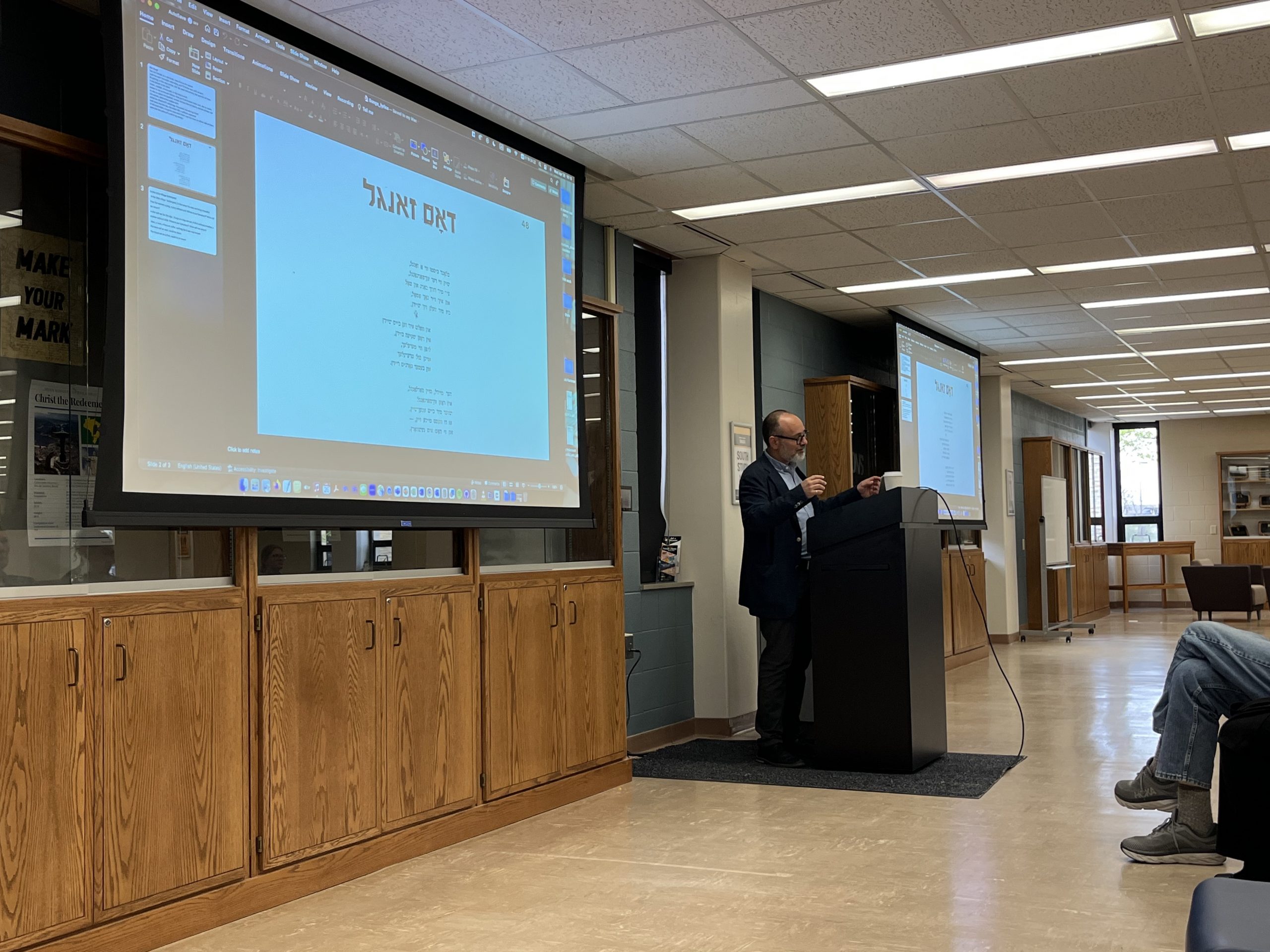BY RAEGAN NEUFELD
The Hays Holocaust Remembrance Committee hosted its final event for Holocaust Remembrance and Education Month on Wednesday, hosting Stephen Naron, director of Yale University’s Fortunoff Video Archive For Holocaust Testimonies.
The Fortunoff Archive digital collection contains over 4,400 testimonies from Holocaust survivors, totaling almost 12,000 hours of footage. Over 140 testimonies contain fragments of songs, whether they be popular interwar period songs, songs from the ghettos and camps or postwar songs. Naron presented on a project called Songs from Testimonies, where a researcher and musician takes songs from the testimonies, does research, creates a composition and then performs the music with an ensemble.
According to Naron, the project is a good example of how to present the material in an educational, commemorative and meaningful way.
“It really is a rich mosaic of Jewish life and death in eastern and central Europe,” Naron said of the two volumes recorded and produced.
Naron presented two testimonies to his audience, both featuring a song. The first was not one from the Fortunoff Archive, but a testimony recorded in 1948 by Ben Stonehill, who recorded over 1,000 songs from displaced Holocaust survivors. The second was from a Fortunoff Archive testimony recorded in 1994. The woman in the video sang a song about life in a labor camp. Then Naron played the song composed based on her testimony.
Naron emphasized the impact the songs can have and what the public can learn from them.
“These songs, we have to remember, were sung individually and collectively during the war,” he said. “But in the survivors’ testimonies, they are recounted or performed as individual voices. In that sense, watching these short clips, you’re reminded that the survivor is singing alone and can only represent so many others who did not survive. The song, therefore, reminds us of the absence of the original audience.”
Naron also discussed the two main approaches to the Songs from Testimonies project, and how he finds a balance between them.
“While I say that we should try to have an unsentimental approach to this music and look at this as a historical source, it’s quite difficult to watch the clip of (a survivor) singing or hear this beautiful performance without being emotionally impacted,” he said. “I don’t think that one approach has to necessarily exclude the other.”
One example of the many historical accounts in the testimonies came from the same woman whose song Naron played. According to Naron, the woman recounted being mistreated by guards, moments of escape and being caught in a different song.
“It’s a fascinating historical document that tells us about life in this tiny labor camp, which is most likely not very well documented in government sources,” he said.
In December, Fort Hays became one of the Fortunoff Archive’s 192 access sites, meaning the testimonies can be accessed by all FHSU students, faculty and staff, as well as campus visitors.
More information about how to access the collection can be found here.

